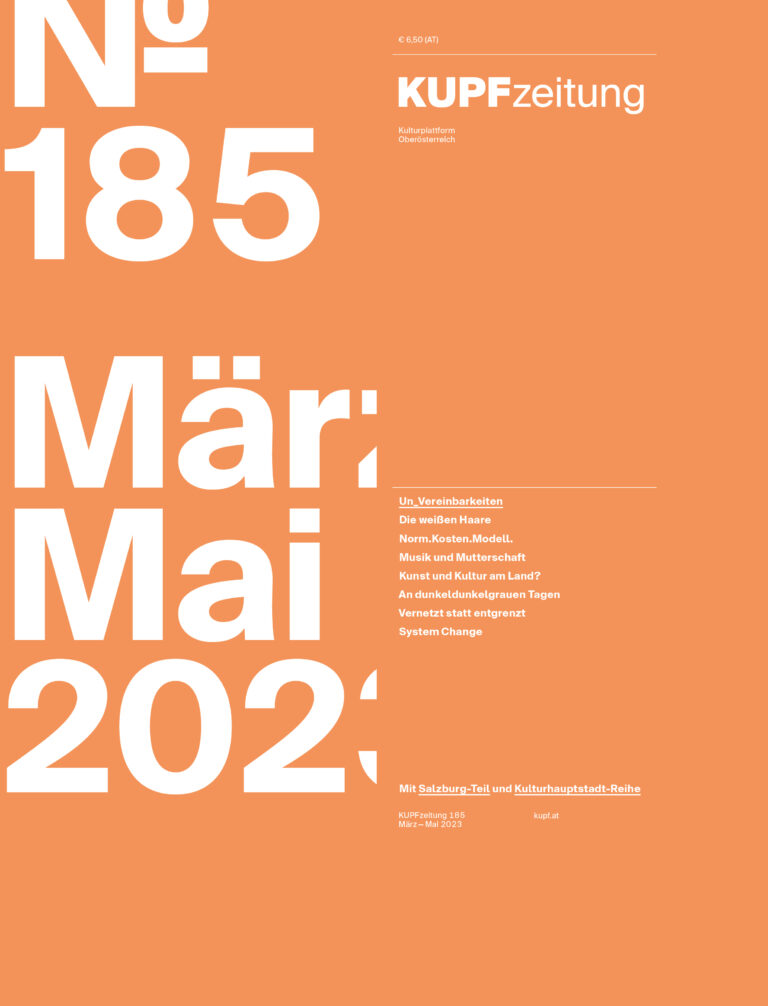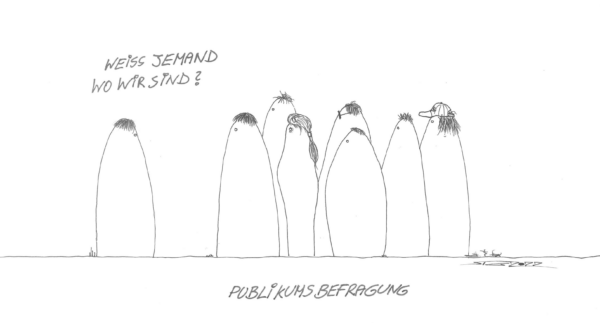Bojana Bregar ponders upon the future of independent/art house cinemas: Will a new subscription style system bring a wave of excitement and unite the cinemas in the fight to lure in the supposedly ever waning audiences?
Das ist die englische und ungekürzte Originalversion. Eine deutsche Übersetzung ist in der Printversion der KUPFzeitung #184 nachzulesen.
I first heard about the “Cineville” concept from friends who experienced it while living in Rotterdam and as proper cinephiles they were big fans of it. Because they had this option, they would go to the cinema much more often than they might otherwise, as it required no real planning, only a stroll to the nearby cinema. Besides it also made them be more adventurous in regards of choosing the films they would watch as they would often just go and see whatever it was on the cinema’s program that night.
As I heard that a similar thing is happening here in Austria, a little belated maybe, but still, it only made sense. There are many (but really, SO many!) beautiful art cinemas just in Vienna alone, along with a few others in the bigger cities, that unfortunately have to compete for their audiences as they share a similar program scheme. So pooling their audiences would probably be beneficial for them.
The big questions
How I see it, the question of the future of art cinema is almost in all cases necessarily a question of convincing the audiences to pay them a visit, to come see the curated programs and support them with buying the tickets. Basically dragging us all away from that cursed “Netflix and chill” mentality, making palatable the idea of putting your outside clothes on and potentially meeting other people.
As there is considerably less money involved in the promotion of art and independent films than there is in mainstream fodder, there is also measurably less attention, less noise made for those films to go around. Ideally, cinemas that show non-commercial films have the state funds to support them. But those, like the audiences, are not to be solely dependant on.
So how do you get the people back in the cinemas – to your art cinemas, to your fine, but admittedly fringe programs? It isn’t easy. Believe me, I have also at some point tried it. One quickly gets defeated and discouraged at the prospect of putting in a lot of working hours and ideas and getting out only a marginal success. Sure you can be Disney and just throw multiple billions into advertising and into fancy sounding technical gimmickry. And even with that success is not guaranteed. But if you don’t have that, what then?
Firstly it is a game of getting people not just informed, but excited on the particular arthouse, medium or even low budget film that you’re planning to show. Word of mouth is what works best, social media isn’t the worst at achieving this either, film criticism is all but dead (*sob*) – in the old school way at least, with reputations of great film critics being replaced by online opinion generators. But the question remains; how to convince the (relative) masses that perk up at the mention of art cinema fare to actually GO and WATCH the movies in the cinema?
A short (fairy)tale of “A24”
A great example of a successful strategy that is able to sustain the hype cycle and that has built a faithfull following as of late is “A24” – not exactly a cinema, but a film distribution and production company, still basically playing the same field of making and selling films to the audiences. Since their start in 2021 they grew in a mostly “organic” way, meaning that they were qute reliant on the word of mouth and the social media shares of their early fans and not so much on the big ad campains. They even grew so much so that they soon reached a sort of a “cult” following, making their status in cinephile circles akin to something Miramax used to be in their heyday. Making smart, deliberate choices along the way concerning acquisition of movies, paying attention to who their audiences are and engaging with them, they slowly built up a roster of what are now considered new modern classics. It has since become a household name, and at the same time left many wondering why the hell did “it” happen for them but not for the others.
Eyes on the prize
Let me tell you a (sort of relevant) story. Not long ago I was invited to a job interview, that had to do with programing an art house cinema. As we went through the proposed strategies I contributed, they were met with scepticism and the same answer I heard many times before: “We tried this already and it didn’t work”. I believe that this is true, many attempts to get the same results as someone else did with the exact same strategy can fail as they are not executed the right way. The devil, as some say, is in the details. It is easy to hype people up, but the hype is basically a trend and as such they are transient and hold a short shelf live.
To prepare for the forementioned interview I also harvested the powers of social media and asked my (very limited, but arguably film-lover and filmmaker heavy) Instagram following to let me know what it was they would need from their favourite art cinemas in order to visit them more often. “Cheaper tickets” was the most common answer. “Older films and retrospectives” was the second most popular answer. That one really shouldn’t be a surprise to anyone involved with the seventh art, as it speaks volumes about the behaviour of cinephiles, us sentimental creatures, bound to nostalgia and rewatching the same favourite films of a handful of directors. If one doubts this, they just need to swing by to the Gartenbaukino on one of those “2001 Space Oddysey in 70mm” days and stare at the overflowing rows of aficionados, young and old, rich and poor(er), waiting to see the monolith and hear “Thus spoke Zarathustra” for the n-th time.
Towards a bold cinematic future
Cinema-going is a ritual and as many other ritualised behaviours it is heavily dependant on the lifestyles of its practitioners. And as there are so many things fighting for at least the smallest fractions of our attention in our daily lives, the information is just not enough. We need to feel rewarded to be paying attention – then we will also be paying for that cinema ticket.
I wholeheartedly wish this holy union of arthouse cinemas turns out as a great success story. And I believe it has the best chances for that, too; as the news of the “Nonstop – dein Kinoabo” was briefly teased at the recent Filmakademie Werkschau event the audiences burst into a spontaneous applaus and cheered. It was a truly beautiful moment to experience, especially as it was an audience of young filmmakers that was cheering it. For them it is just as much, if not more, an opportunity, as for the filmgoers that might, like my friends in Rotterdam, feel more motivated to spend an evening with a bold, less conventional film. Even a film not yet blessed with the seal of approval or a cult following decades old. Perhaps they will even have a chance to discover a new cult movie of their own! But only if the filmmakers will be emboldened to make one first – and the programmers of the cinemas to actually put them on the program. Wouldn’t that be something great to look forward to?
The new subscription system, “Nonstop – dein Kinoabo”, that was recently announced and initiated by the art house cinemas in Austria, is following the example of a successful Dutch cinema subscription practice, known as “Cineville”. It will offer a subscription to a number of arthouse and independent cinemas around Vienna and in entire Austria for the monthly price of 22 Euros, with different contract options for students and non-students alike. The owners of the Kinoabo ticket will be free to go and watch as many films as they can find time and interest for.























